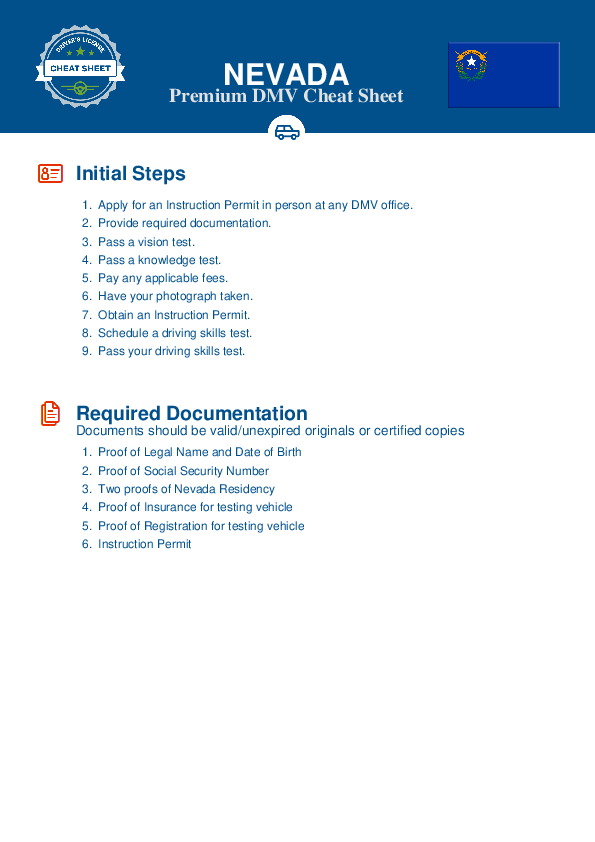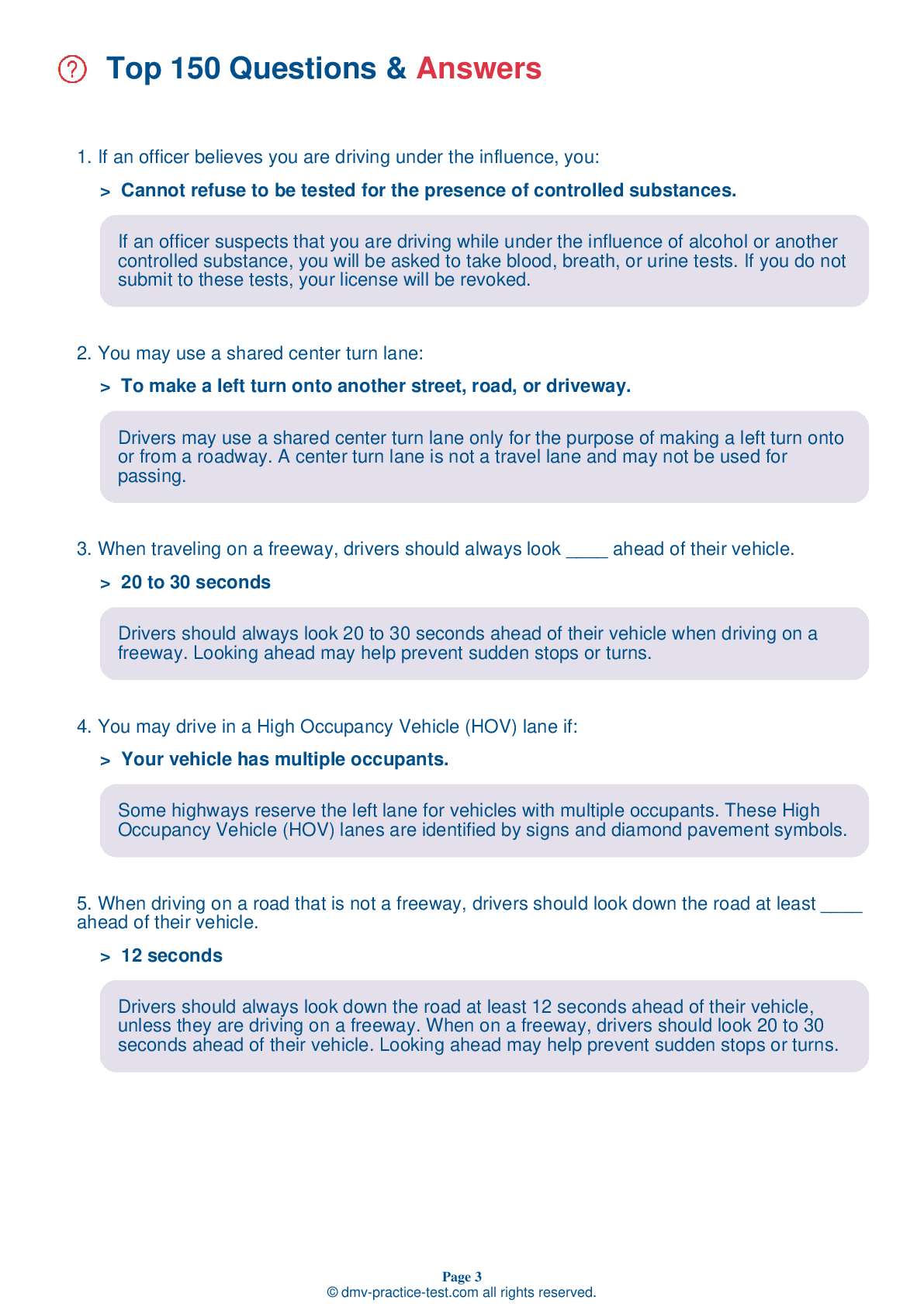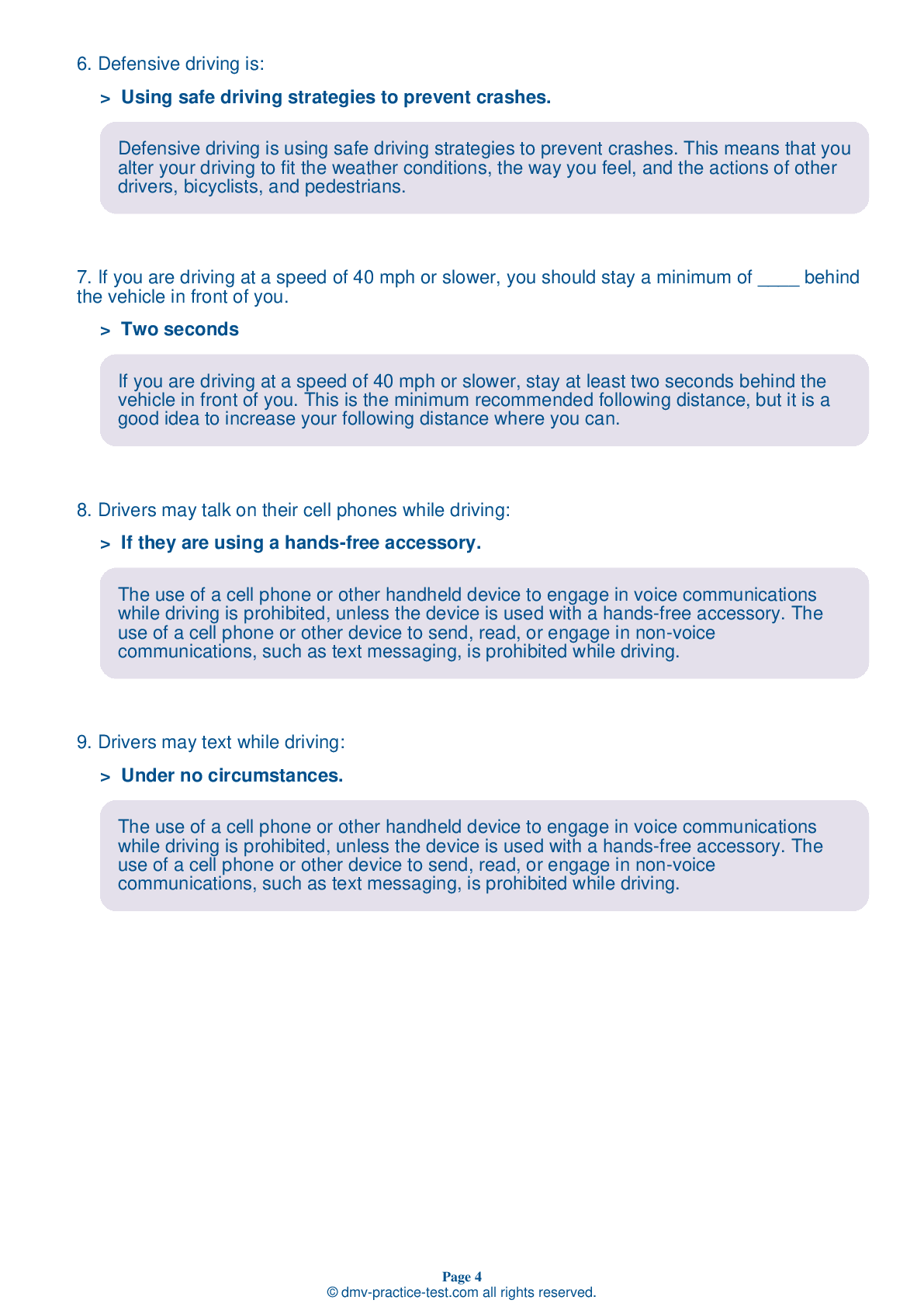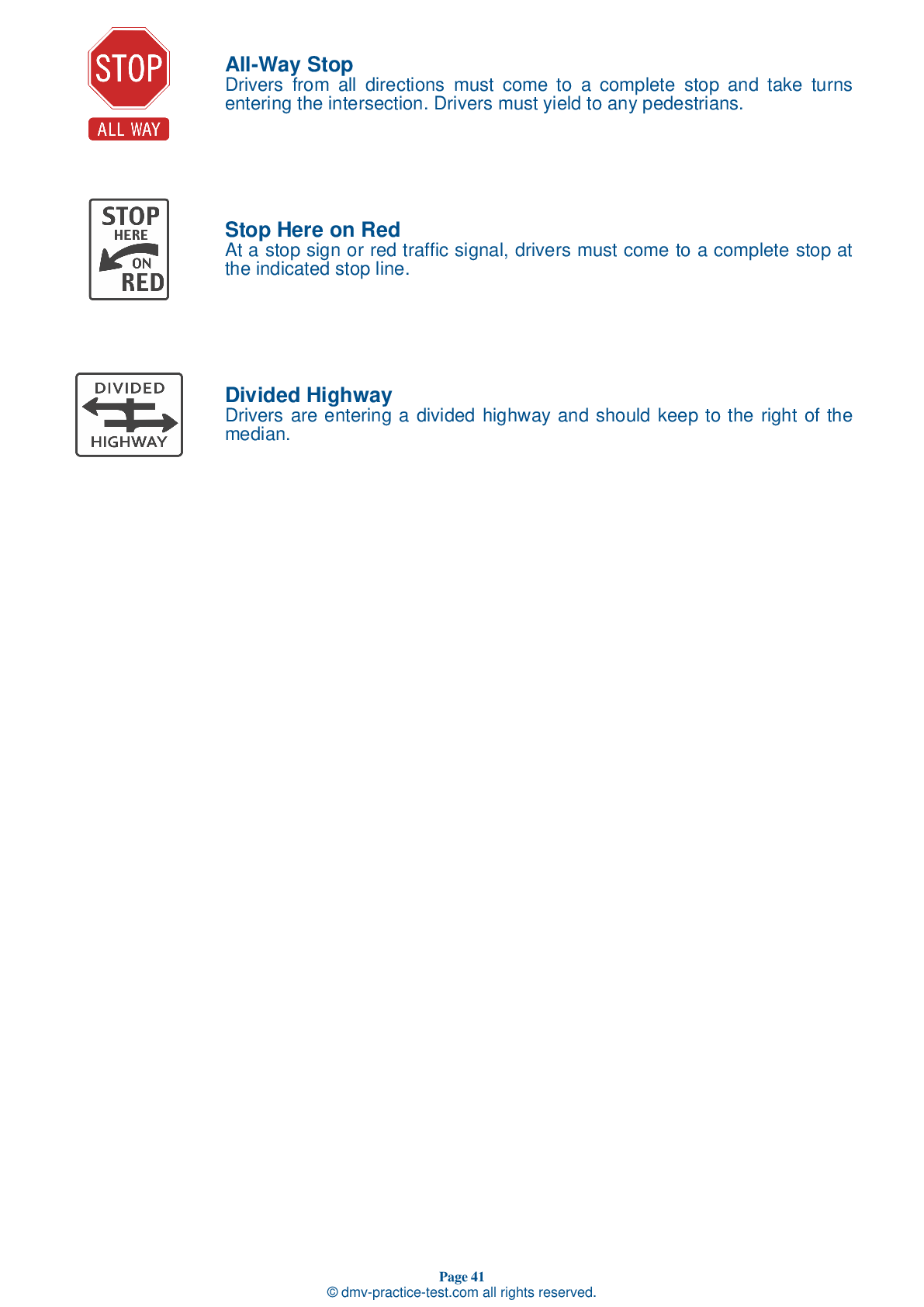FREE Nevada DMV Practice Test #19 Page 3 of 7
The Nevada DMV practise examinations have been updated for January 2025. It includes questions based on the Nevada Driver Handbook's most significant traffic signals and legislation for 2025. Use actual questions that are very similar (often identical!) to the DMV driving permit test and driver's licence exam to study for the DMV driving permit test and driver's licence exam.
On the practise exam, each question gets a tip and explanation to help you remember the concepts. The written component of the official Nevada DMV test will include questions about traffic rules, traffic signs, and driving statutes, as well as knowledge from the Driver Handbook.
To obtain a passing grade, you must correctly answer 40 of the 50 questions. To help you prepare for your instruction permit or driver's licence, take our Nevada DMV practise test.
The DMV exam is available in several languages.
Using any kind of testing assistance will result in an automatic fail, and the DMV may take additional action against your driver's licence, so stay away from it.
15 . Your tire blows out while you are driving. You should:
If you experience a tire blowout, do not immediately apply the brakes. Grip the steering wheel firmly and steer to remain in your traffic lane. Reduce your speed gradually by releasing the accelerator and staying off the brakes. Once you are moving very slowly, apply the brakes lightly and pull off the road into a safe area.
16 . While driving at night, you may use your parking lights instead of headlights.
It is unlawful to drive at night using only your parking lights. You must use your headlights when driving in lowered visibility.
17 . Drinking alcohol and driving is:
Driving while impaired or intoxicated is a serious traffic safety problem. Safe driving is not possible when you drink alcohol or take other drugs. Driving under the influence is dangerous both to you and to others on the road.
18 . An inattentive driver is a driver who:
Do not become distracted by looking at passengers, attempting to find something in your vehicle, looking at reading material, sightseeing, or daydreaming while driving. Continue scanning the road, checking your mirrors, and looking at the instrument panel at regular intervals. Developing these safe habits will keep you attentive as a driver.
19 . On a road which has no sidewalks, a pedestrian should walk on the:
Pedestrians should walk on the side of the road facing the traffic in the lane nearest them.
20 . This sign means:

Warning signs prepare drivers for upcoming road conditions and hazards and are usually yellow with black markings. This sign tells drivers to be aware of potential traffic entering from an upcoming side road.
21 . Which of the following influence(s) the effects of alcohol?
Your blood alcohol content (BAC) depends on how much alcohol you drink, how much time passes between drinks, and your weight. Eating before or while you drink helps slow the absorption of alcohol somewhat, but it cannot prevent intoxication or impairment if you have too much to drink.
See the exact questions that will be on the 2025 Nevada DMV exam.
99.2% of people who use the cheat sheet pass the FIRST TIME
LT gives us an insight on how the cheat sheet provided her with all the study questions she needed before taking her test.
Joe initially studied with the handbook and failed his test, he eventually found us online, studied and pass his test the first time around.



